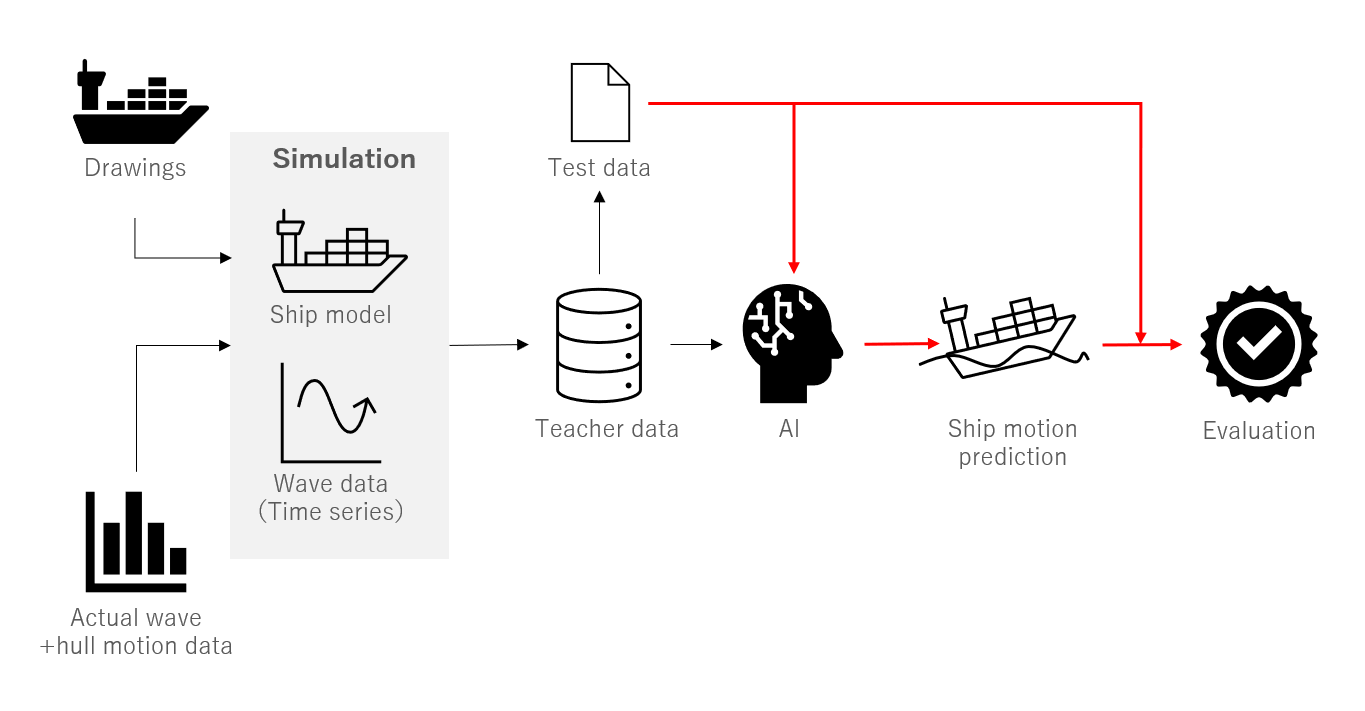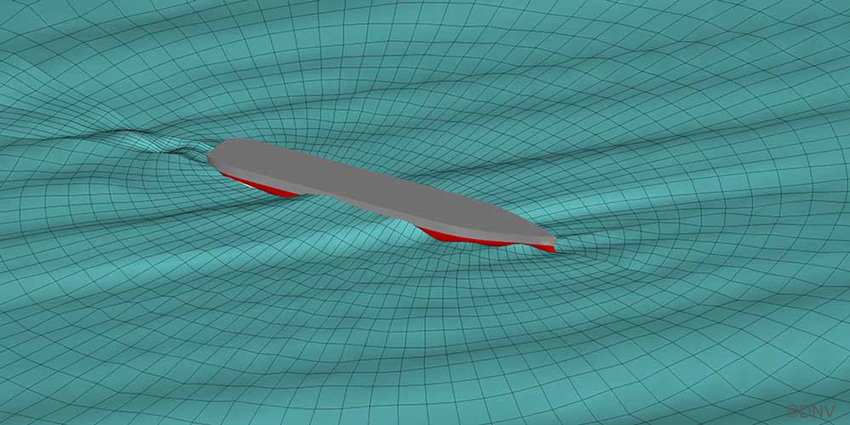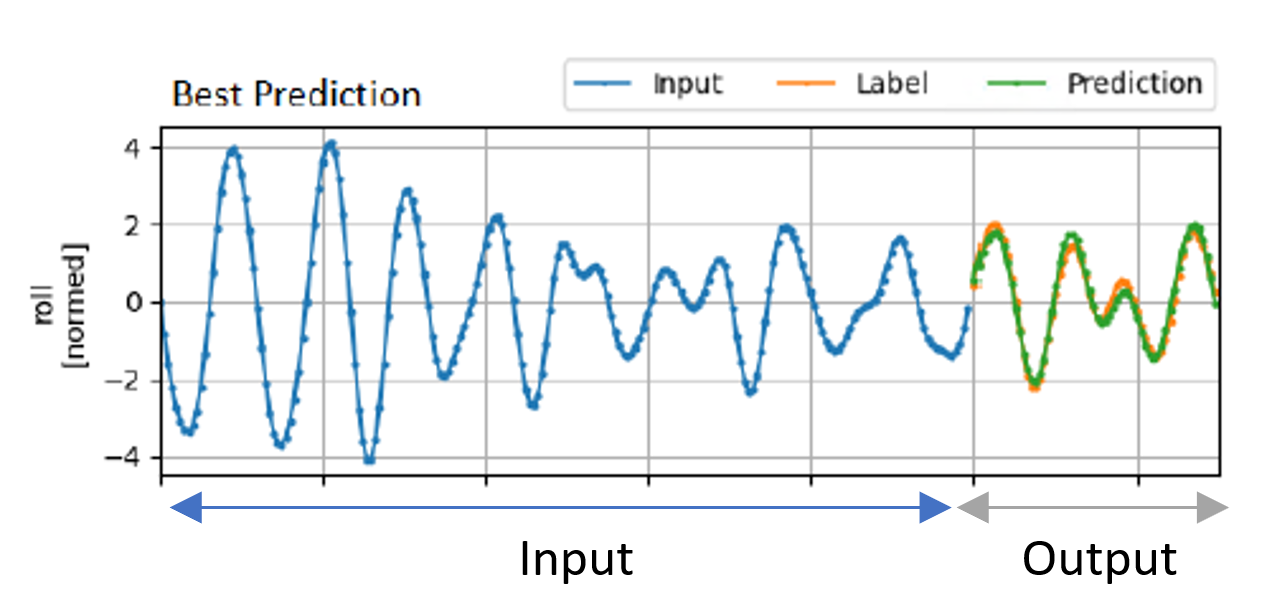Ship Motion Prediction with Machine Learning
October 3, 2022
Identify near-future hull motions in advance
In the field of offshore oil and gas development and offshore wind power generation, it is critical to ensure the safety of personnel working at sea. There is a need to develop technology for real-time prediction of motion of ship’s hull and floating body.
MTI Singapore Branch is conducting research and development with the Technology Centre for Offshore and Marine, Singapore (TCOMS)*1 on technologies for time-series prediction of hull motion in actual sea areas.
If it is possible to accurately predict the motion of a vessel of a few minutes later, based on both the data of the vessel and the current wave information obtained by RADAR, it would be possible to accurately assess the risk in advance of when the crew and operators can safely perform their tasks. In addition to work vessels, the prediction of hull motion can also contribute to improving the quality of cargo transportation by considering the most appropriate fastening method and avoiding cargo damage caused by large ship motions.

Fig.1 Schematic of ship motion prediction model

Fig.2 Ship motion simulation model
Actual sensing data and simulation
Sensors are installed on ships operated by the NYK Group to acquire wave data and detailed hull motion data. At the same time, the same hull model as the actual vessel is created in the simulation, and time-series wave data is provided to reproduce the hypothetical motion situation.
The difference between the hull motion results obtained from the simulation and the motion obtained from the ship in actual operation are then evaluated. From this, training and validation data sets including waves and hull motion are created and machine-learned by AI to construct a model that predicts hull motion from wave data.
In the future, we aim to improve the safety of workers and crews in small ship operations in the fields of offshore wind power generation and offshore resource development by predicting hull or floating body motion in individual waves in time series, improving the accuracy of hull and floating body motion time series simulation technology and wave and motion measurement sensors.

Fig.3 Motion prediction by the model
(Writer: Daichi Ogawa)
Related Link
Contact
For additional information about this, please contact us by our inquiry form.
